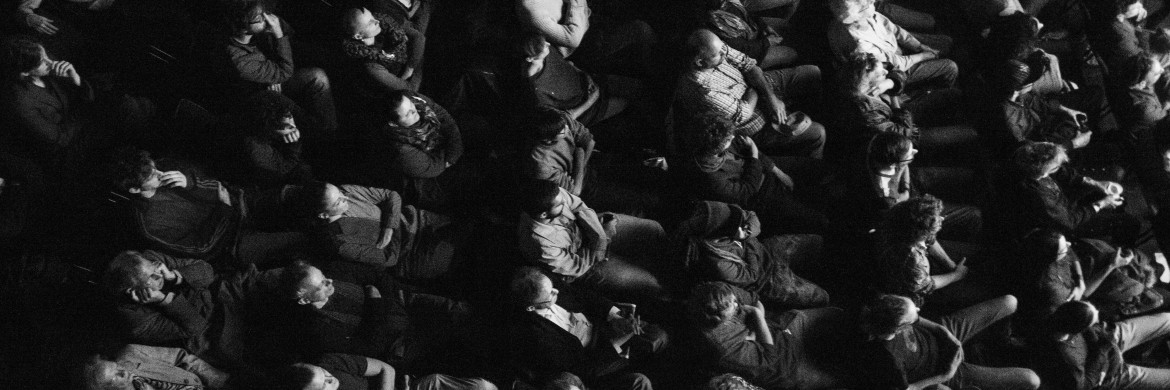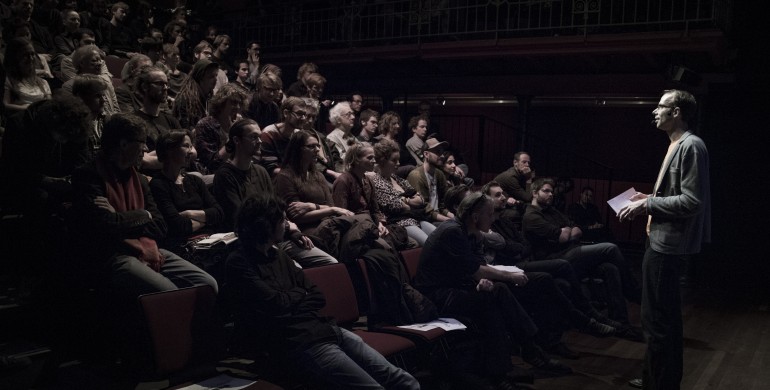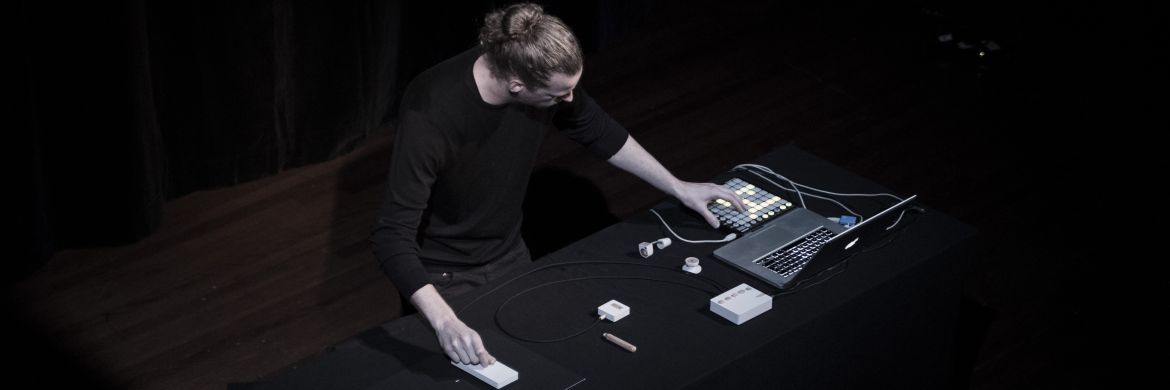Coded Matter(s) #2: Sound Hackers – a retrospective
We’re proud to look back at a successful and sold-out second instalment of Coded Matter(s). For those who were unable to attend we asked Kimberly Waldbillig, a keen blogger with a MA in New Media & Digital Culture, to do a write-up of the afternoon. If you don’t like words, the full set of photos can be found on our Flickr account. If you do like words, read on! And in any case: stay tuned for the event video coming soon.
The introduction from director of STEIM Dick Rijken was a layman’s primer to the ideas that are keeping today’s sound hackers awake into the wee hours of the night. He questions the roles of composer and performer in the new worlds into which digital electronics can bring us. Rijken reiterates the paradoxical point that code concedes flexibility at the same time that it demands autonomy. That’s precisely what the Coded Matter(s) series is designed to investigate: the definition, categorisation and evaluation of hybrids which emerging in the atemporal algorithmic mess that is our sonic reality.
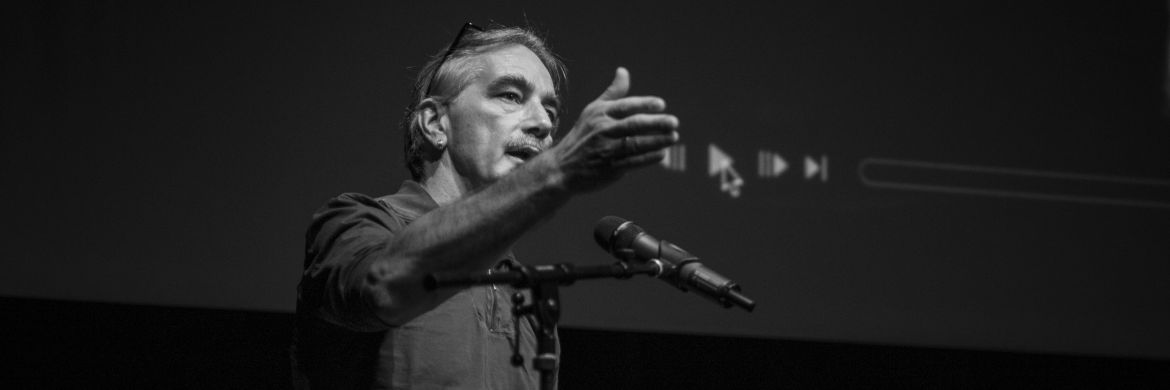
The afternoon matinee began with a chalkboard lecture developed by software artist Marcus Graf. He explained how conforming creativity to a computing machine is actually beneficial to the survival of the artist as an artist – with the aid of a musical mind called Rosis Tres. Graf claims that this prosthetic can overcome typical limitations of humans during the artistic process, even in terms of being more playful. It is indeed difficult to believe that the output of the creation is entirely thanks to the machine.
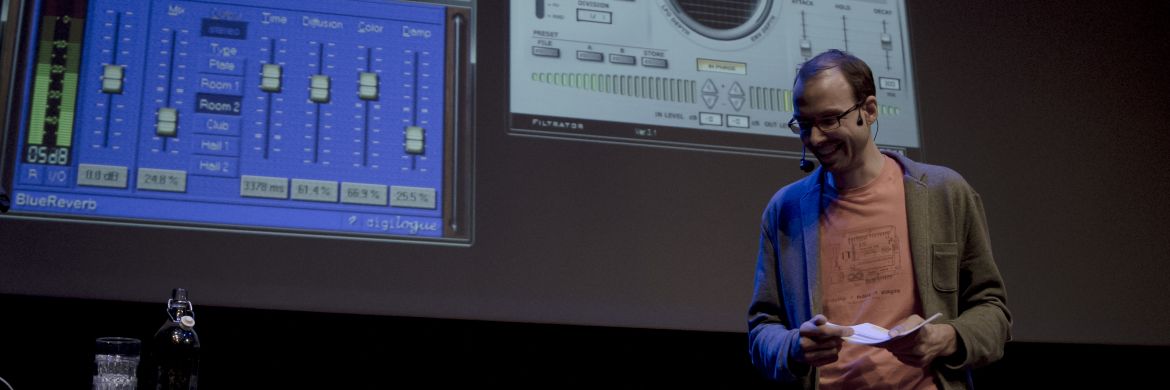
A live performance from Soundlings & Gareth Davis followed, which decidedly removed the idea that sound is a function of harmony and music and has to be linear or in fact organised at all. Davis played his shiny bass clarinet, flanked by two MacBooks and Soundlings Tijs Ham and Roald Dillewijn who would modify his sound sampled in real-time. The Soundlings broadcasted GUIs they’d created onto the white screen behind them, but I couldn’t recognise the syntax of the language being used for live coding; only after the fact I found out it was a mashup of Max/MSP and Javascript outfitted specifically for the occasion. Supercollider code turned the ‘normal’ built-in trackpad into a haptic modulator to stretch and bow the alternating breathy and sharp pulses from the bass clarinet. The trio fulfilled the task of the truly experimental composer – designing a set of parameters in which sound can be created and letting them unfold on their own.
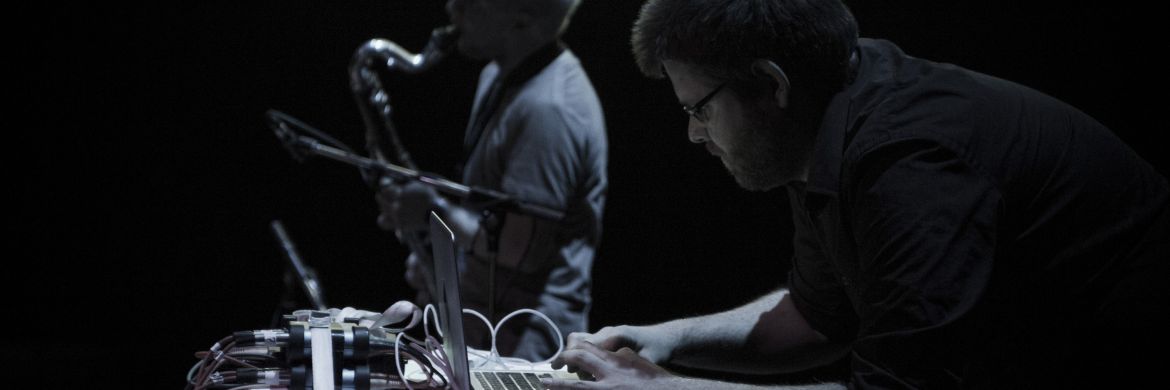
Soon thereafter we were introduced to Buqs, seemingly friendly creatures built to address the concept of technological ubiquity. Our urban landscape is covered with technology, but it’s largely focused on stimulating and captivating the visual sense. The project designed by Joris Hoogeboom and Teun Verkerk attempts to shift the focus to auditory elements of the city by having the Buqs appropriate the landscape as an instrument. Communication can be networked between the insect-like microcontrollers as well as linked to remote devices in order to synthesise sounds. Albeit superficially autistic, the Buqs playfully ask “what sound does this window sill make?”
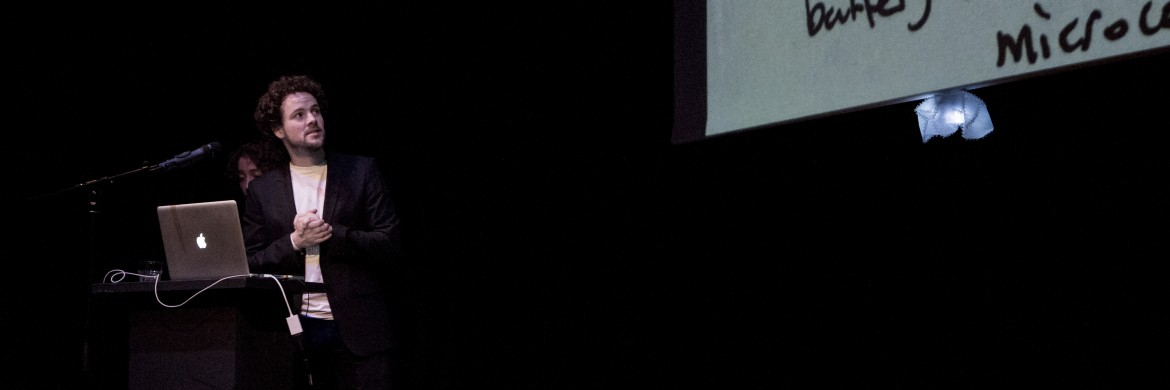
The audience was delighted by the work of Jonathan Reus with the succour of SonoLab for the performance titled ‘iMac Music’ where typing in code or making clicks were bypassed for a more direct form of interfacing. The group’s activities created a cacophonous yet rhythmic noise, bringing a new meaning to the concept of facemelting. The kittywhompus glitching graphics were projected for the audience, as a window into the machine. Together it appeared that the raucous language that materialised is what the iMac would say if it had a voice to describe its processing activities. I actively wondered throughout the show if the performers would get electrocuted as they manipulated the innards of the iMacs with electronic implements. This is re-purposement at its best – for me a metaphorical representation of a day when the computers of the world would suddenly spring into chorus.
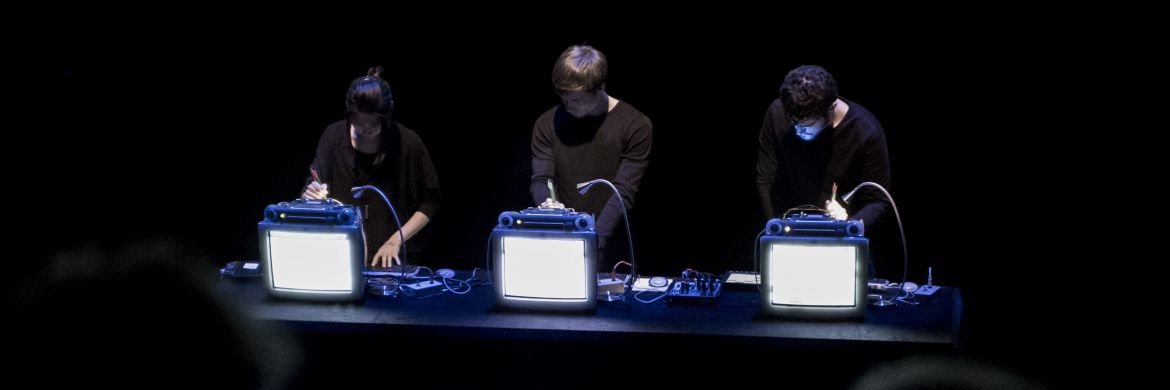
Consequently Pieter Jan Pieters (OWOW) calmly took to the stage and prepared his slick self-made instruments for ‘Sound for Intuition’. Although the majority of the his routine seemed to work with a synthesizer pad, the thimble sensor to convert finger movements to sound modifications and a scanner converting drawn lines to tones did draw attention. The point of his project is to disguise the code from the user and bring back the connection between movement and sound. For someone with a background in industrial design this makes sense, sacrificing the baring of the system’s guts for the beauty of natural intuitive playing. He also worked closely with a theremin sort of device, invoking puppet shows in the age of television. As the sampled sounds linked to his actions unfold, it becomes clear that what he has created is only a prototype.
Paul Prudence closed the matinee with a deafening Dutch premiere performance of ‘Cyclotone’, a synaesthetic experience reminiscent of Hadyn’s surprise symphony. The motion of the cylindrical circles appeared almost alive and embodied of their own accord, a sort of automated kaleidoscope of a black hole. Holistically it reminded me of the work by Moholy-Nagy with optical sound, where the audience extracts what they can from it based on their own personal sonic memes. Not for the epileptic, the hypnotic drones move from sound to music to sound again. The visuals acts as a radar that gives us extramusical information about sound, what code does for sound, it creates metadata that can be manipulated in a way that allows us to further play with the matter.
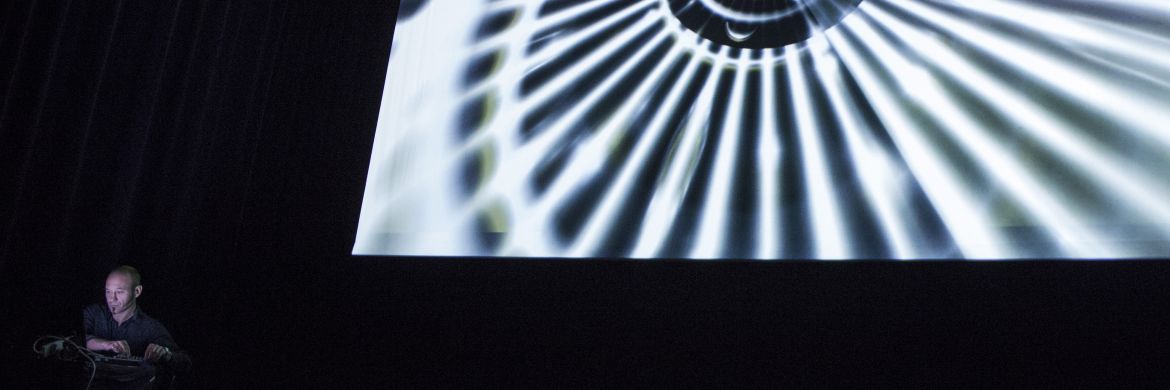
Coded Matter(s) #2 brought together sound hackers and musical enthusiasts to contemplate the effects of technology artistic processes and the ability of silent data processing operations to create new (un)natural sonic phenomena. Code is making it possible to command the sense of sound in new ways, but this will only prevail as a method of making if new ways of thinking also emerge.
Kimberly Waldbillig
